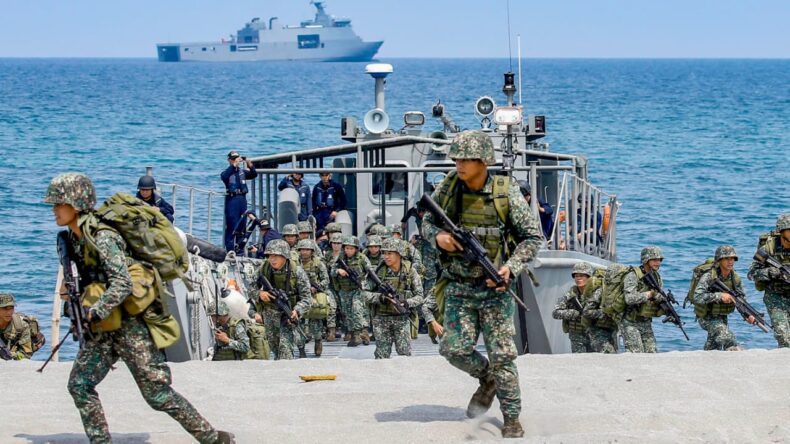US and Philippines engage in a biggest combat drill, in the South China Sea and the Taiwan Strait, which is likely to anger China.
On Tuesday, the United States and the Philippines will begin their largest joint military drills in decades. These exercises will include live-fire training and a boat-sinking rocket assault in the South China Sea and the Taiwan Strait, which is likely to enrage China.

US and Philippines conducts annual drills to confront external forces
Many as 17,600 military personnel will participate in the annual drills by the steadfast treaty allies known as Balikatan, which is Tagalog for “shoulder to shoulder.” They will last until April 28. It will be the most recent American military show in Asia, where the United States has repeatedly warned China over its actions against Taiwan and in the disputed sea channel.
In order to better confront China, including in a potential conflict over Taiwan, the Biden administration has been fortifying an Indo-Pacific arc of alliances.

This is consistent with the Philippines’ efforts under President Ferdinand Marcos Jr. to protect its territorial interests in the South China Sea by stepping up joint military drills with the U.S. and allowing rotating groups of American forces to stay in more Philippine military bases in accordance with a 2014 defence agreement.
The largest exercises in Balikatan’s three-decade history are being participated in by approximately 12,200 US military personnel, 5,400 Filipino forces, and 111 Australian counterparts. Col. Michael Logico, a Philippine representative for Balikatan, assured reporters prior to the start of the exercise that they were not intended to provoke anyone.
An act of deterrence
Logico declared that it is actually a form of deterrence and it is when we prevent outside forces from occupying us.
According to Logico, American and Filipino forces will sink a 200-foot (61-meters) target vessel in Philippine territorial waters off the western province of Zambales this month in an organised airstrike and artillery bombardment during a live-fire drill the allies will stage offshore for the first time. Logico declared, “We will attack it with every weapon system we have, including ground, naval, and aerial.”

The Philippines’ military officials claimed the manoeuvre was to strengthen the nation’s coastal defence and was not directed at any specific country.
According to the U.S. Embassy in Manila, such field exercises would test the allies’ strengths in combined arms live-fire, data and intelligence sharing, communications between manoeuvre units, logistics operations, and amphibious operations.
US-China proxy game
The long-running territorial disputes between China, the Philippines, and four other governments, as well as Beijing’s intention to annex Taiwan, using force if necessary, have put Washington and Beijing on a collision course.
China issued a warning last week about the growing American military presence in the area. It “would only result in more tensions and less peace and stability in the region,” according to Mao Ning, a spokesman for the Chinese Foreign Ministry, during a routine news briefing in Beijing.

After Taiwanese President Tsai Ing-wen’s meeting with House Speaker Kevin McCarthy last week in California, which infuriated Beijing, China finished three days of combat drills simulating sealing off Taiwan on the day the Balikatan exercises began in the Philippines.
The Chinese seized Mischief Reef in the middle of the 1990s and turned it into one of seven missile-protected island bases in the tensely disputed Spratlys archipelago in the South China Sea. On Monday, the United States 7th Fleet deployed the guided-missile destroyer USS Milius within 12 nm of the coral outcrop, which Manila claims. Such “freedom of navigation” operations have been carried out by the U.S. military for years in an effort to counter China’s extended territorial claims in the crowded seaway.













